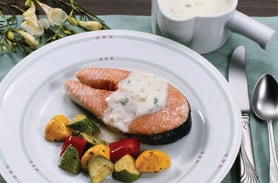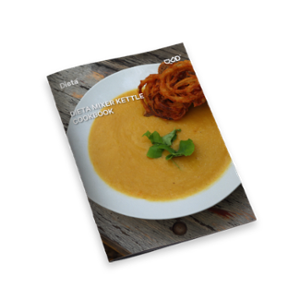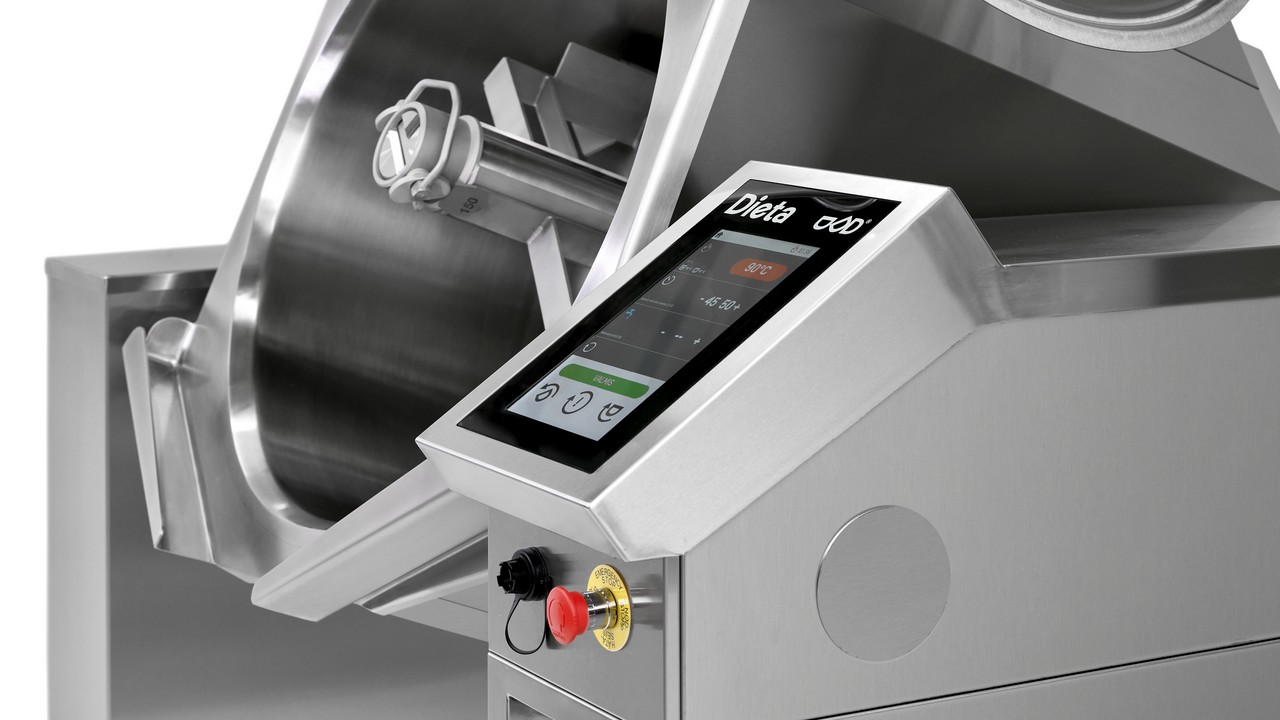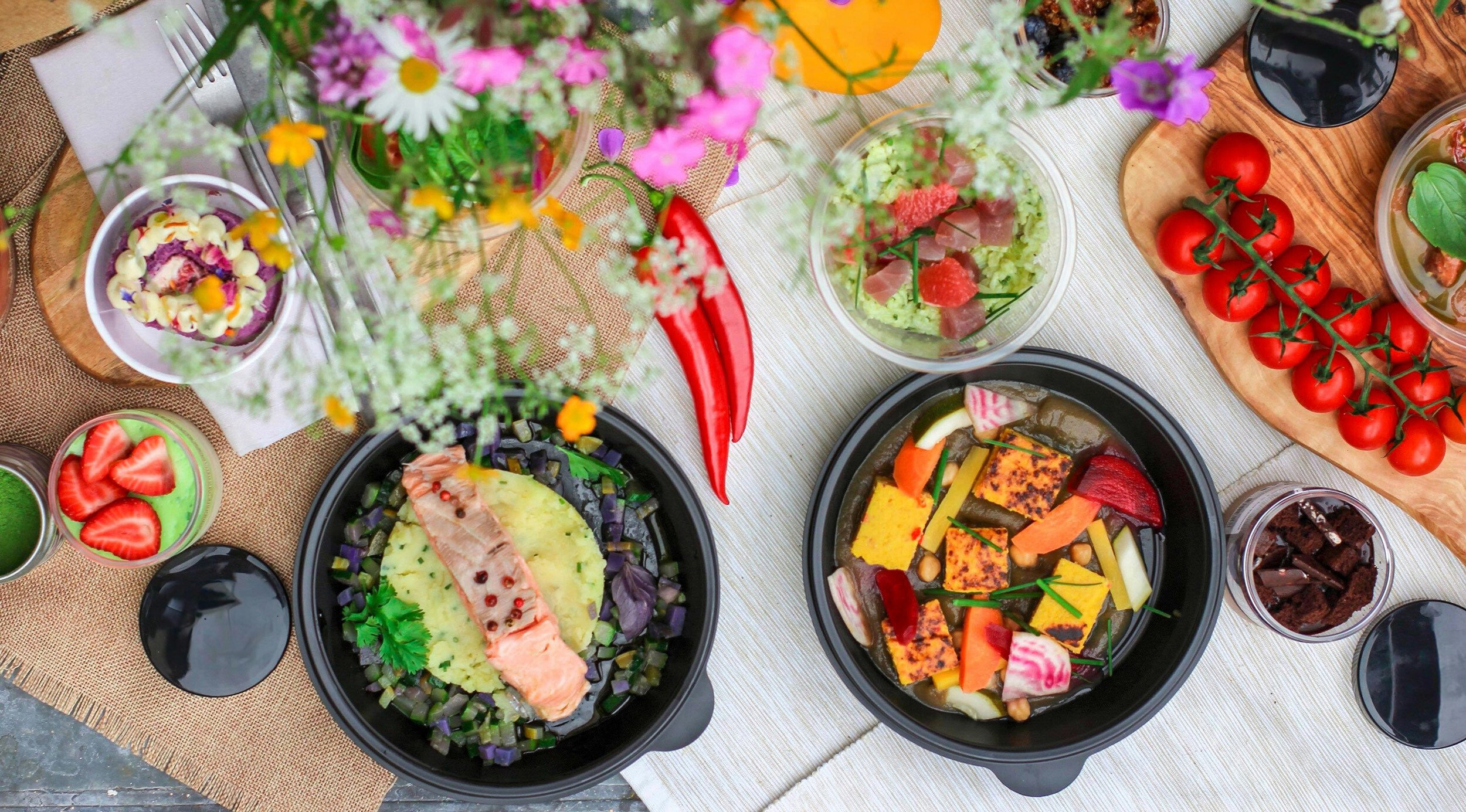Vegetables should be cooked very gently to maintain
vitamins and colour
To maintain the structure of fragile vegetables as well as possible, cook in a shallow kettle. Most of the Dieta
Mixer Kettles have a very shallow form to ensure the best quality when cooking vegetables.
Do not overcook
Cook only until tender, or ‘al dente’. Overcooking will deteriorate taste and color. Keep in mind that some cooking will take place even during chilling and warm holding.
Season after cooking
To decrease the amount of sodium, salt should be added at the final stage of cooking. This way the vegetable taste salty, but require only a half of the amount normally needed. Also remember, that salt in the cooking water will toughen some vegetables.
Serve immediately
Serve immediately after cooking. Warm holding will destroy vitamin C and deteriorate color, especially in devices with high holding temperatures or where the temperature fluctuates. Take the vegetables out of the kettle immediately after cooking to avoid excess cooking (the kettle will stay warm for hours)
COOKING PROGRAM
Vegetables 100%,
Water 50%
STEP 1
“Add vegetables” -note
- Cook: 93°C,
- Time 30 min
- Water 50%
- Mixer: Forward, pause; speed 10
“STEP 2”
Draw water out using a strainer plate
Cooking in steam
Minimize the water by cooking in steam: put a small amount in the kettle, and set the temperature to +93... +98°C and bring to a boil. Add the vegetables, close the lid, and cook until done.
To see that the temperature is right, after a couple of minutes of cooking (with the vegetables), open the lid – a considerable amount of steam should escape. If not, increase the temperature. The amount of water should be so small that after cooking, only some water is left.
When cooking for the first time, open the kettle a couple of times to see that some water is left on the bottom of the kettle. Add water if needed. After cooking, write down the amounts of water and vegetable, so you do not need to do the testing again.
Products with sticky structure
For products with heavy mass, low viscosity, long fabrics, or with sticky structure (e.g. raw cabbage) it is recommended to only use a mixing hook for mixing, as these type of products can be so sticky that they do not mix properly, and rather move as one mass.
If you still prefer to use a standard mixing tool, first cook and wait that product has become tender, then mixing is possible. Example water amount is approx. 10 liters of water to 100 kilos of cabbage.
Cooking dried vegetables
Avoid overnight soaking. Just pre-soak the time recommended in the package.
Cooking frozen vegetables
As a rule, cook frozen vegetables from frozen state. Only thaw partially (in a refrigerator) such vegetables that are stuck together (like spinach) and need separation before cooking. Do not cook in large lumps because the surface will overcook.
Most of the frozen vegetables are partially precooked, and thus you do not need to cook them as long as fresh vegetables. Check the doneness from the package. Some items may be fully cooked and only need rethermalising.
Do not refreeze thawed or partially thawed vegetables. Frozen pre-processed (diced, shredded, sliced) vegetables are excellent to increase kitchen´s product variety and to reduce labour costs.
Combine-Cook-and-Serve
Use pre-processed vegetables and meat. Combine before cooking (no washing, dicing etc.) and cook until done. Since there is no preparation, the variety of foods may be very wide at a very low labour costs.
Download Dieta Mixer Kettle Cookbook for inspiration, ideas and instructions for cooking with your Dieta mixer kettles. 



